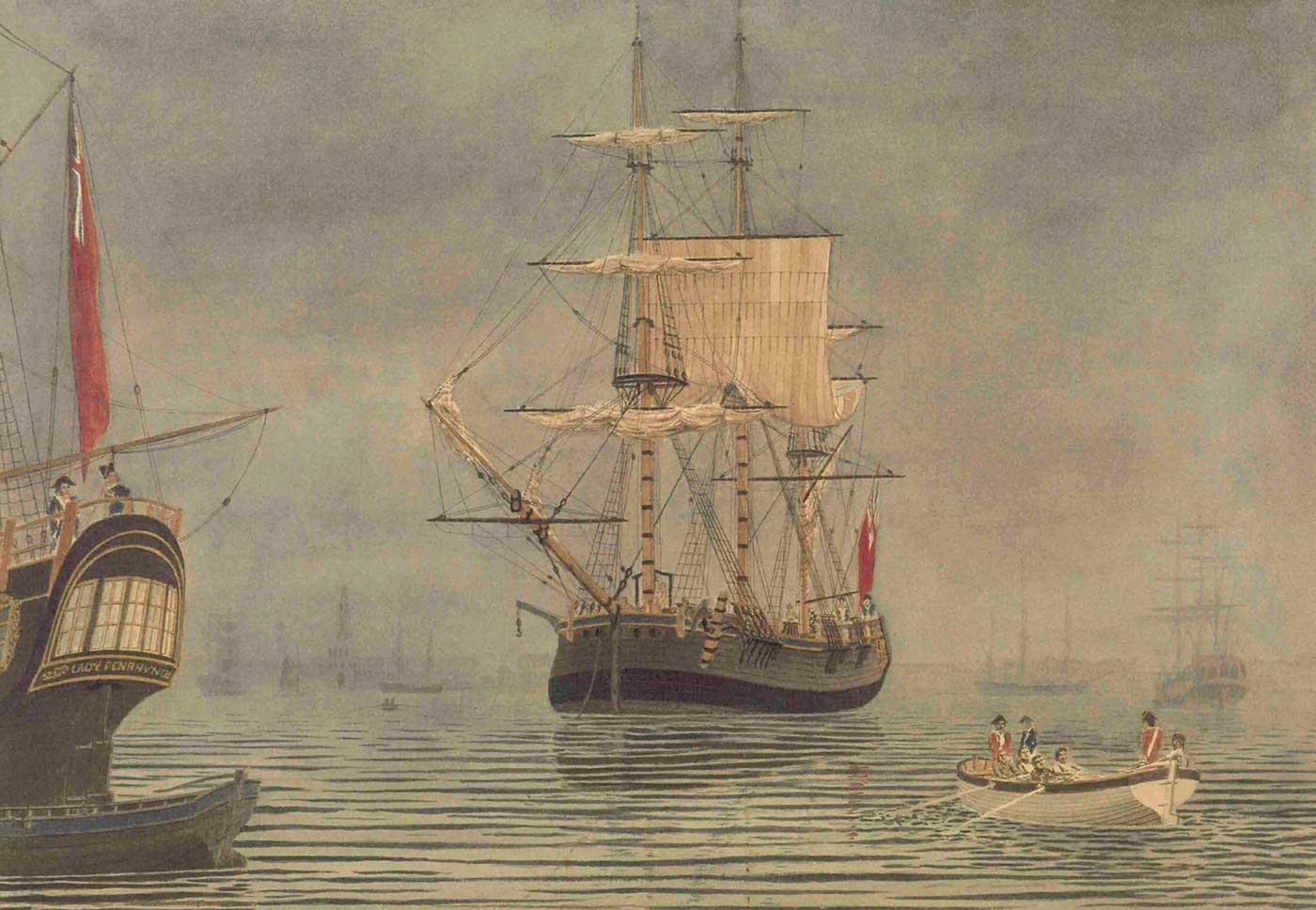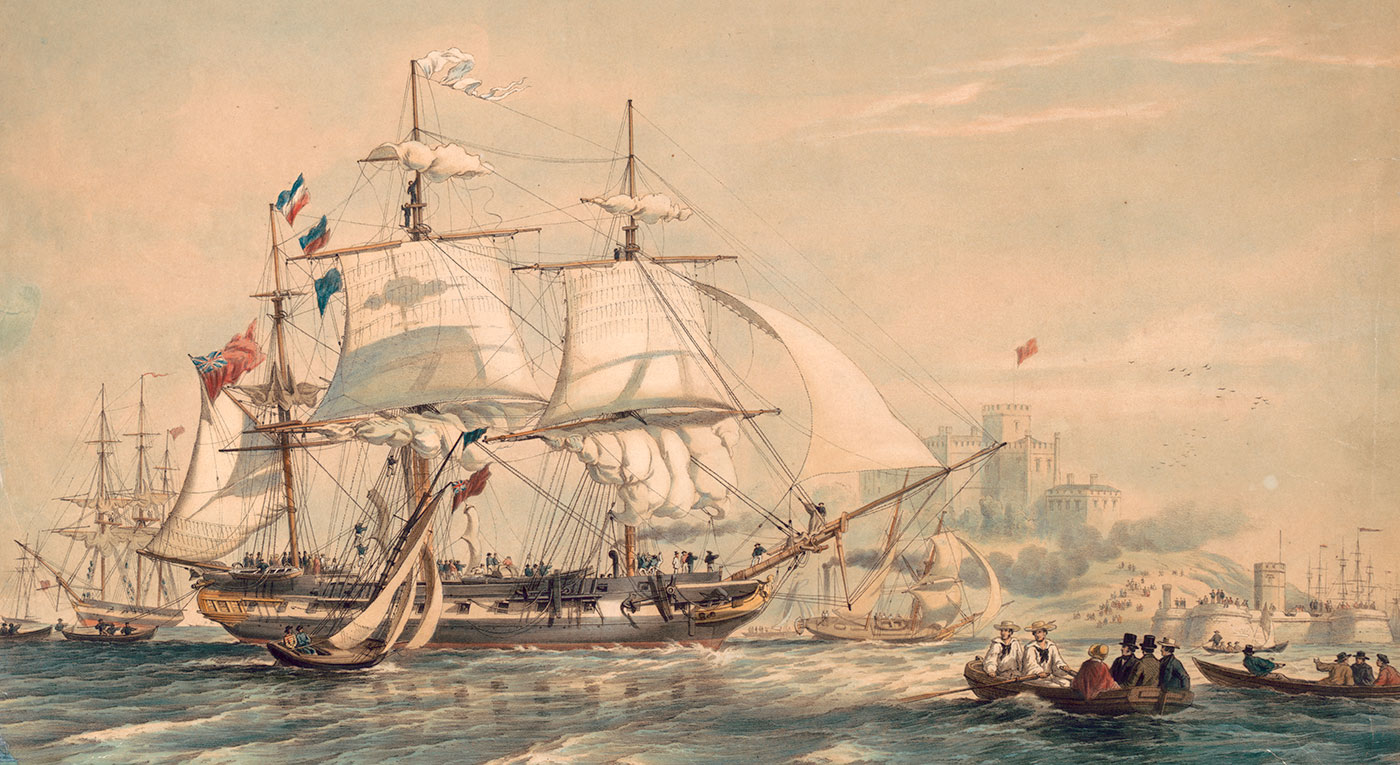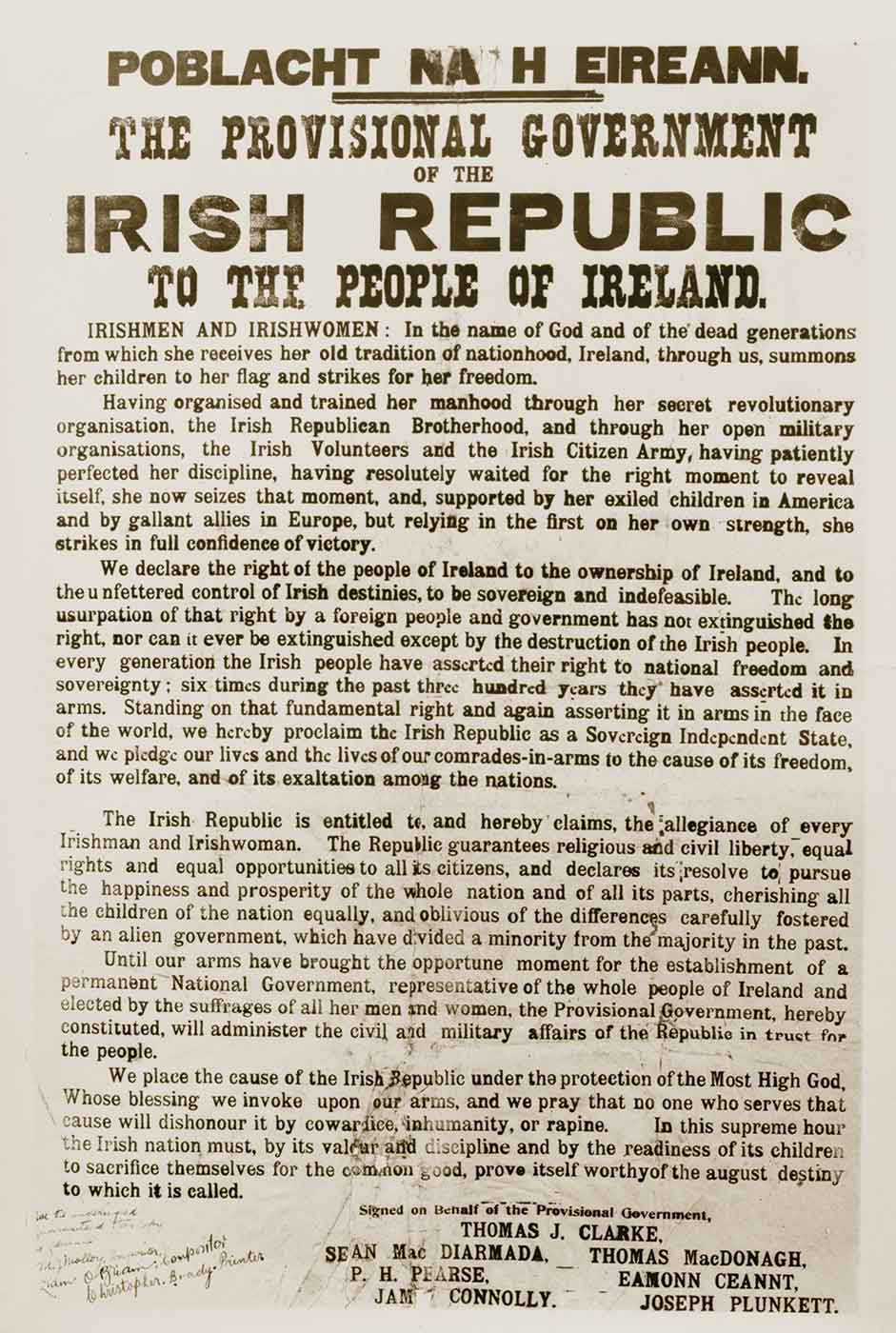This short timeline shows key events that influenced Irish migration and affected the preservation or destruction of key records in Ireland. Highlights good national, county and local sources across the decades.
Plantations of Ireland. Throughout this period Irish land was confiscated by the British crown and colonised by settlers from England and Scotland, principally in the provinces of Munster and Ulster.
1552
Foundation of the Office of the Ulster King of Arms. Known from 1943 as the Chief Herald of Ireland, this office was responsible for granting coats of arms to Irish families.
1649–1652
Cromwellian invasion of Ireland. Cromwell and many of his army were Puritans who considered all Roman Catholics to be heretics, and so for them this conquest was partly a crusade. The impact of the invasion was unquestionably severe. Estimates of the drop in the Irish population vary from 15 to 25 per cent, to more than half. Native Irish estate owners were banished and forced to settle west of the Shannon river, ‘to hell and Connaught’, and their lands were given in payment to adventurers and soldiers.
1652
A list of the inhabitants of south County Dublin was compiled. It survives in the National Archives and contains such interesting personal information as: ‘Terenure: John Strong, labr, 24, a little low man; Kath, his wife, 23, med brown.'
1659
Census of Ireland by Sir William Petty. This was not like a modern census and it listed only those with a title to land. It also recorded for each barony (a division of a county), the principal Irish names and their number, for example: 'Barony of Raphoe, County Donegal, Boyle, 7.'
1660s
Compilation of the Hearth Money Rolls. These rolls listed names of those liable for a tax based on the number of hearths, or fireplaces, in a household. They were organised by county and parish but have not survived for all counties.
1680
Survey of land ownership. Around 1680 the English Government carried out a survey of land ownership in Ireland which was compiled into ‘Books of Survey and Distribution’. They provide a record of landowners between 1641 and 1680.
1695–1746
Penal Laws. These laws denied political and most land-owning rights to Catholics and, to some extent, to Presbyterians.
1708
Registry of Deeds. A repository of records of wills, land transactions, marriage settlements in Ireland and other deeds from 1709. Most deeds registered prior to 1800 were related to the Protestant Ascendency but Catholic occupiers were sometimes mentioned.
1737
First edition of the Belfast Newsletter, a paper whose reporting covered most of the northern third of Ireland. Newspapers contain much genealogical information and increasing numbers of Irish newspapers are being put online. Some have been indexed for events such as births, deaths and marriages.
1749
Census of the Diocese of Elphin. Ordered by the Church of Ireland (Protestant) Bishop, Edward Synge, this census, which encompassed all religious denominations, covered most of County Roscommon, and some parishes in Sligo and Galway.
1751
Dublin’s first trade directory published — An Alphabetical List of Names and Places of Abode of the Merchants and Traders of Dublin.
1766
Religious Census of Ireland. A few transcripts of this census, which list householder names, survive for counties Tipperary, Cork, Limerick, Louth, Derry and Wicklow. A small number of other religious censuses, the quality of which varies, were conducted in different parishes around Ireland in the 18th and 19th centuries.
1769
First provincial trade directory in Ireland published — John Ferrar’s Directory of Limerick.
1782
Catholics allowed to buy land. Most restrictions on Catholic education and the Catholic clergy were removed.
1792
More Catholic rights reinstated. Catholics were allowed to practise as lawyers and to marry Protestants.
1793
Catholics allowed to vote and Catholics appear on voting rolls that have survived.
1796
Publication of the Spinning Wheel Premium Entitlements List. This contained about 60,000 names of those entitled to a grant for having planted specific acres of flax. The grant was in the form of spinning wheels to turn the flax into linen yarn.
1801
The Act of Union to join England and Ireland came into effect.
1818–1924
Date range for the Registered Papers of the Chief Secretary’s Office, Dublin. These include ‘State of the Country Papers’ and ‘Outrage Papers’, some of which contain background reports of incidents which led to individuals being transported to Australia.
1821
First official government Census of Ireland. The vast majority of householder schedules from this census were destroyed in the 1922 Public Record Office fire but some volumes survived for counties Fermanagh, Cavan, Galway, Offaly and Meath. Detailed abstracted statistical information for this, and the subsequent census, was published in the British Parliamentary Papers.
1823–1838
Tithe applotment. A tax on all farm produce used for the upkeep of the Protestant Church of Ireland — the ‘Established’ church in Ireland — paid by Catholics as well as Protestants even though the Protestant community was greatly in the minority. It caused great resentment among the Catholic majority, and tithes were responsible for much agrarian strife. Around 1834 a record of those liable to pay tithes was compiled and this became known as the ‘Tithe Applotment’. Very valuable as it records every landholder in the country in the years before the Great Famine of 1845–1850.
1824
Establishment of the Irish Ordnance Survey office. From 1829 to 1842 Ireland was mapped at a scale of six inches to one mile (15.24 centimetres to 1.609 kilometres). These maps reveal the landscape — fields, farm houses etc. — from which millions of people emigrated to America, Australia, Great Britain and other destinations.
1829
The Catholic Emancipation Act allowed Catholics to enter parliament and to hold public office. Repeal of the last of the Penal Laws allowed Catholics to practise their religion and have events legally recorded in parish registers.
1831
Establishment of the Irish ‘National School’ system. By the 1850s this state-subsidised system had spread throughout Ireland. School rolls survived for some schools, especially in the northern part of the country and information on teachers is held in the National Archives of Ireland.
1831
Census of Ireland. The records for this census were destroyed in the 1922 Public Record Office fire but some householder schedules survive in the National Archives, especially for County Derry.
1837
Publication of Memoir of the City and North Western Liberties of Londonderry, Parish of Templemore. The so-called Ordnance Survey memoirs were to be compiled during the mapping of Ireland. They were to contain details about every parish in Ireland ranging across agriculture, education, religion, emigration and general social information. Only one, that for Templemore, County Derry, was ever published but the manuscript material for many northern counties survived and was published in a series for each county in the 1990s.
1838
The Irish ‘Poor Law Act’ introduced the English ‘poor law’ system to Ireland with its union workhouses and oversight of each ‘union’ by a Board of Guardians. The ‘Minute Books’ of the boards survive in many instances and a few of the ‘Indoor Registers', which list in some detail those seeking refuge in the workhouse, are extant.
1841
The Census of Ireland recorded population at 8,175,000. Like the previous two censuses, most of the records were destroyed in the 1922 Public Record Office fire.
1845
Civil registration of Protestant marriages began.
1845–1849
The Great Famine. The potato blight caused a potato famine. About a million people died and many more migrated. The west and southwest of Ireland were the worst affected.
1848–1864
Griffith’s valuations. The first full scale valuation of property in Ireland, overseen by Richard Griffith. It is one of the most important surviving 19th-century genealogical sources.
1849–1857
Landed Estate Court or Encumbered Estates Court. Designed to facilitate the sale of estates whose owners could not invest enough to make them productive. Records contain rentals and maps drawn up for sales.
1851
Census of Ireland. Again the vast bulk of the records have not survived, although there is some original material for parishes in County Antrim.
1861–1891
A national census was held in 1861, 1871, 1881 and 1891. None of the records of these censuses survive except for the abstract reports published in the British Parliamentary Papers.
1864
Civil registrations of births, deaths and marriages become general practice.
1881
Ireland’s population was 5,174,836. In the 40 years between 1841 and 1881 the population was reduced by 3 million, significantly through deaths as a result of famine and mass migration.
1888–1934
Publication of the Journal of the Association for the Preservation of the Memorials of the Dead. Over the years of its existence this association recorded thousands of inscriptions from old gravestones, many of which no longer exist. The gravestone for Patrick Lysaght in Kilfenora Chuchyard, County Clare, read: ‘I have not deceived anyone, I have often patronised [faction] fights and bouts of drinking. Patrick Lysaght died A.D. 1741, aged 85.'
1890
Publication in book form of Sir Robert Matheson’s Varieties and Synonyms of Surnames and Christian Names in Ireland. This publication dealt with, ‘the varieties in the form and spelling of names usually met with, and also those names differing altogether in form, which had been ascertained to be used interchangeably’. For example, the name Short in Ireland could be an anglicised version of the Irish McGirr.
1893
Publication of The Origins and History of Irish Names by PW Joyce.
1901
Census Records 1901. Census returns were arranged by townland (the smallest division of land) or, in urban areas, by street. The census listed for every member of each household: name, age, sex, relationship to head of the household, religion, occupation, marital status and county or country of birth, and recorded an individual’s ability to read, write and speak the Irish language. The census included the physical details of houses such as size, number of windows, rooms etc. The census also covered institutions, for example, police and military barracks, schools and hospitals. Census records from 1901 and 1910 are digitised and available online.
1908
The Old Age Pension Act enabled people over 70 to apply for a pension. Pension applications, with much valuable family detail, are accessible.
1909
Special Report on Surnames in Ireland by Sir Robert Matheson published in book form. Matheson, the Registrar-General for Ireland, compiled a list of all surnames, and their numerical strength in the four provinces of Ireland, for which births were registered in official birth indexes in 1890. Among much else, it showed that Murphy was the most numerous surname in Ireland.
1911
Digitised Census Records 1911. Same as 1901 Census with the addition that married women were required to state the number of years they had been married, the number of their children born alive and the number who were still alive
1920
Partition of Ireland. The Government of Ireland Act formed two parliaments in Ireland; one in the north and one in the south. Both were to have their own prime minister, but were subordinate to the British parliament.
The ‘Black and Tans’ formed to reinforce the Royal Irish Constabulary.
1922
Four Courts Fire Dublin. During fighting between Anti-Treaty and Irish Free State forces, this building was extensively damaged and many irreplaceable records were destroyed including wills, 1821–1851 censuses and many, but not all, Church of Ireland (Anglican) parish registers.
1926
Census 1926. The 1926 census records will be opened to the public by the National Archives of Ireland in 2026.
1930
First publication of Analecta Hibernica, the journal of the Irish Manuscripts Commission. The Commission, established in 1928, has done a vast amount of work in identifying, saving and describing significant amounts of historical manuscript material relating to Ireland, much of it of genealogical significance.
1943
Creation of the Office of the Chief Herald of Ireland and the Genealogical Office. The Chief Herald is responsible for all official grants of coats of arms in Ireland, and to families of emigrants. Since its formation the office has collected a large amount of Irish genealogical material. This material now forms part of the collections of the National Library of Ireland.
1953
First publication of the Clogher Record. The journal of the Clogher Historical Society covers the Catholic diocese for most of counties Fermanagh, Tyrone and Monaghan. Articles over the years have featured local families and emigration stories. Similar quality journals exist for some other local history societies in Ireland.
1957
Publication of Irish Families: Their Names, Arms and Origins by Dr Edward MacLysaght, Chief Herald of Ireland 1943–1954 . This was added to in 1960 by More Irish Families and in 1964 by Supplement to Irish Families. MacLysaght’s comprehensive work dealt with the origins of the major Gaelic, Norman, English and Scottish names in Ireland.
1979
Formation of the Bangor (County Down) family history group which has grown into the North of Ireland Family History Society. As stated on their website, the society’s aim is ‘to foster an interest in family history with special reference to families who have roots in the North of Ireland and their descendants, wherever they may be’.
1982
Clare Heritage Centre and Museum opening at Corofin, County Clare. The Centre, founded by retired local National School headmaster, Naoise Cleary, was one of the first of its kind in Ireland, aimed at helping family historians find their ancestors in Clare and also to understand the sort of society their ancestors had emigrated from. There are now heritage centres in most counties.
1984
Foundation of the Irish Family History Society. The society has member organisations in all the Irish counties, and family historians overseas should acquaint themselves with the publications of these societies relevant to their research.
1988
Microfilm copies of Irish Transportation Records presented to Australia by Taoiseach, Prime Minister of Ireland, Charles J Haughey, TD. This Bicentennial gift from Ireland included all extant transportation records held in the National Archives of Ireland, including the important collection of petitions against transportation to Australia.
1988
Publication of Sligo: Sources of Local History, compiled by John McTiernan, Sligo County Librarian. The local history collections of the various county libraries throughout Ireland contain much family history information and some, like Sligo, have published accounts of their holdings.
2007
Launch of Finding Tipperary. This book, compiled by local historian Dr Dennis Marnane and local studies librarian Mary Guinan Darmody, is described as ‘the essential reference book for anyone with an interest in the county’. Tipperary was one of the most significant counties in Ireland for migration to 19th-century Australia.


